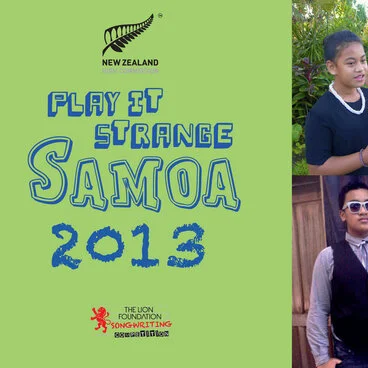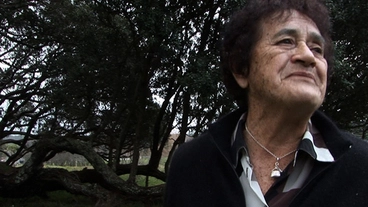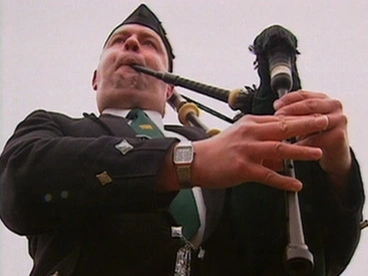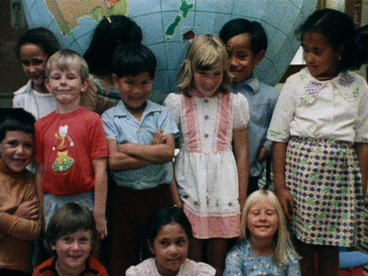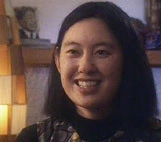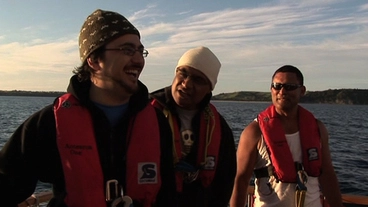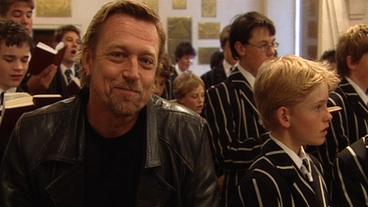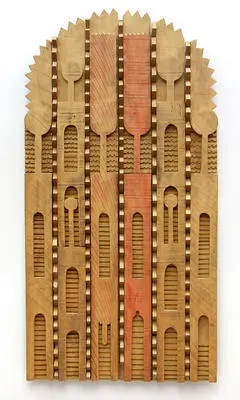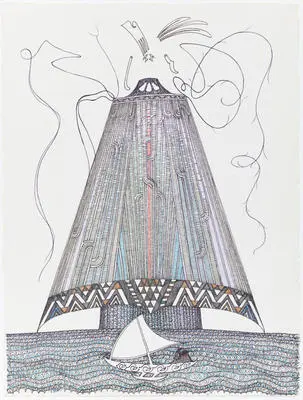Whakapapa: Tuia Mātauranga Curiosity Card
A DigitalNZ Story by National Library Services to Schools
A group of Māori in front of a wharepuni (sleeping house) at Mangaakuta, near Masterton, about 1870.
Bragge, James 1833-1908 : Unidentified group of people in front of a meeting house in Masterton
Alexander Turnbull Library
WHAKATAUKĪ
"Ehara taku toa i te toa takitahi - engari he toa takitini kē!"
"My strength/being is not that of one person – but of thousands!"
Ko wai koe? (Who are you?), from 'The odyssey of Captain Cook'
Museum of New Zealand Te Papa Tongarewa
I Am the River
NZ On Screen
[Who am I? Who are you? U37A]
Auckland War Memorial Museum Tāmaki Paenga Hira
Through whakapapa Māori trace their ancestry all the way back to the beginnings of the universe. Whakapapa orders both a seen and unseen world, and shapes the Māori world view. Whakapapa is genealogy, a line of descent from ancestors down to the present day. Whakapapa links people to all other living things, and to the earth and the sky, and it traces the universe back to its origins. Whakapapa are told orally in different ways. The most common is tararere, which gives a single line of descent from an ancestor, without marriage partners or other kin. A short whakapapa giving just the names of important ancestors is known as tātai hikohiko or āhua hikohiko. The wharenui (meeting house) can be seen as a model for whakapapa, with the oldest ancestors at the top of the house near the tekoteko (the carved figure which rests there), spreading outwards to the bottom of the house where all the most recent lines are traced, in ways that show how people are linked to one another. These links are important to order day-to-day life for tribal members. Links between more distant ancestors are important between tribes.
Mā roto i te whakapapa tātai mai ai te Māori i a ia i te orokohanga rā anō o te ao. I roto i te whakapapa whakaraupapahia ai ngā mea katoa o roto o te ao Māori. Ko te whakapapa he kāwai whakaheke mai i ngā koromatua tae noa ki ngā rangi o mohoa nei. Mā te whakapapa tūhonotia ai ngā mea ora o te rangi, tae noa ki ngā pūtakenga mai o te ao nui mārama hoki. He maha ngā tūmomo whakapapa. Ko te whakapapa tararere ka tātai i te whakahekenga mai i te tīpuna ki te uri. Ko te tātai hikohiko, te āhua hikohiko rānei he whakapapa poto e whakatakoto ana i ētahi tīpuna rongonui.
Tūrangawaewae is one of the most well-known and powerful Māori concepts. Literally tūranga (standing place), waewae (feet), it is often translated as ‘a place to stand’. Tūrangawaewae are places where we feel especially empowered and connected. They are our foundation, our place in the world, our home. Pepeha – tribal sayings Tūrangawaewae can include other places as well. Many tribes identify themselves in terms of their mountains, waterways and important ancestors.
Ko tētahi o ngā āhuatanga, tikanga nui rawa atu i roto i te ao Māori, ko te tūrangawaewae. Otirā, ko te tūrangawaewae ka pā ki te wāhi e tau ai te tangata i te ao. Koinei pū tō tātou tūāpapa, tō tātou taunga ki te ao, tō tātou papatipu. Pepeha Arā anō ngā wāhi kei tua atu i te marae ka noho hei tūrangawaewae. Ka kōrero te tangata mō tōna ake iwi, ka kōrero a ia mō ngā maunga, ngā awa, ngā tīpuna rongonui i tōna rohe.
BACKGROUND
Source: 'Whakapapa – genealogy',URL: http://www.teara.govt.nz/en/whakapapa-genealogy, (Ministry for Culture and Heritage), (updated 1-July-2015)
Whakapapa
Source: 'Whakapapa', URL: http://www.teara.govt.nz/mi/whakapapa, (Ministry for Culture and Heritage), (updated 1-July-2015)
Tūrangawaewae – a place to stand
'Papatūānuku – the land - Whakapapa and kaupapa', URL: http://www.teara.govt.nz/en/papatuanuku-the-land, (Ministry for Culture and Heritage), (published 24-September-2007)
Tūrangawaewae mō te tangata
Source: 'Papatūānuku - Te whakapapa me te kaupapa', URL: http://www.teara.govt.nz/mi/papatuanuku, (Ministry for Culture and Heritage), (published 24-September-2007)
What makes you... you?
Radio New Zealand
Be Happy With Who You Are
Play It Strange
Let My Whakapapa Speak
NZ On Screen
Explaining whakapapa
Manatū Taonga, the Ministry for Culture and Heritage
Giving mana to Tiriti o Waitangi in our schools
CORE Education
QUICK FACTS
- The Māori concept of whakapapa refers to a living object’s genealogy stretching from creation to the present day through ancestors.
- Knowing your whakapapa gives you mana through knowing who you are.
- Whakapapa links and binds individuals to a time, place or a marae.
- Whakapapa helps us collectively know and understand where we came from and what our relationship is with others.
- One meaning of whakapapa is placing layers on top of one another. Whakapapa in this context means a solid base or place on which to stand.
- The western idea of a family tree — a chart showing generations of a family and their relationships is a form of whakapapa.
- Whakapapa doesn’t just cover individual human genealogies, living creatures (like fish, birds and trees) also have their own whakapapa.
- Much Māori tribal genealogy is held by Māori families and also New Zealand’s major research libraries.
- Creation whakapapa varies between iwi but often begin with Te Kore (potential, the void, emptiness) and end with Te Ao Mārama ( the world of light).
The New Zealanders
NZ On Screen
Our People Our Century - Being Kiwi
NZ On Screen
OTHER RESOURCES
Births, Death and Marriage Historical Records — kei te pae tukutuku nei ka taea e te tangata te rapu mauhanga o Aotearoa whānui.
E tū whānau — nā E Tū Whānau tēnei pae tukutuku hei whakamana i te whānau.
Family history is important — your family tree can show you exactly how you are related to all of your ancestors.
My whakapapa saved my life — how many of us know the names of our grandparents? Great-grandparents? Great-great-grandparents?
Nga Tipuna o Ngati Porou — Ngati Porou are descendants of Maui-Tikitiki-a-Taranga. This relationship with Maui is shown in the genealogies of Ngati Porou.
Spoken word poetry on the importance of whakapapa — Stevie lives in Auckland, but her Whakapapa is to Ngapuhi, Ngati Porou and Te Arawa.
The importance of whakapapa — for Māori questions like “Ko wai au?” “Who am I?” and “No wai au?” “Where do I come from” hold supreme importance.
Whakapapa — the Māori dictionary definition.
Whakapapa — in Māori tradition, all parts of the natural world are descended from Ranginui, the sky father, and Papatūānuku, the earth.
Whakapapa — a song was written for E tu Whanau song competition 2018.
Whakapapa and links between the natural and human world:
Whakapapa and whānau terms — this whakapapa (genealogy) gives the terms associated with whānau.
Whakapapa Māori — ko tā te pae tukutuki nei he kōrero whakamarama mō ngā āhuatanga o te whakapapa me ngā momo kupu whakapapa.
Whānau – Māori and family — one of the foundations of whānau is whakapapa, which has great importance in Māori society.
Whakapapa in Te Toa Takitini
Manatū Taonga, the Ministry for Culture and Heritage
Whakapapa of rocks and stones
Manatū Taonga, the Ministry for Culture and Heritage
Whakapapa III
Auckland Art Gallery Toi o Tāmaki
Whakapapa
Museum of New Zealand Te Papa Tongarewa
Maui, Ancestor of the Pacific
Auckland Art Gallery Toi o Tāmaki
FERTILE QUESTIONS
- What can we learn by asking, ‘where are you from?’
- He aha te tikanga o te pātai, no hea koe?
- How and what can we learn from the past?
- How do we communicate who we are and what we value?
- He aha te take e whai take ai te whakapapa?
- What is your question?
Hei whakapapa (genealogical pendant)
Museum of New Zealand Te Papa Tongarewa
Rākau whakapapa (mnemonic genealogical staff)
Museum of New Zealand Te Papa Tongarewa
The ancestor Tauheikurī
Manatū Taonga, the Ministry for Culture and Heritage
ADDITIONAL QUESTIONS
- How do homes reflect who we are and what we believe?
- How does our whakapapa make us who we are?
- What traditions in your home are influenced by the past?
Ngā Rauru ancestors
Manatū Taonga, the Ministry for Culture and Heritage
Kūmara whakapapa
Manatū Taonga, the Ministry for Culture and Heritage
Te Kore whakapapa
Manatū Taonga, the Ministry for Culture and Heritage
This story was curated and compiled by Te Puna Mātauranga o Aotearoa | National Library of New Zealand, Services to Schools staff, 2019.
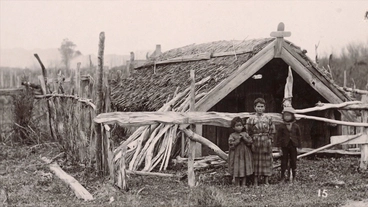
![[Who am I? Who are you? U37A] Image: [Who am I? Who are you? U37A]](https://thumbnailer.digitalnz.org/?resize=770x&src=https%3A%2F%2Fcollection-api.aucklandmuseum.com%2Frecords%2Fimages%2Fmedium%2F492745%2F9350c51611591d2bf69e8b14ccdda5df9d533f20.jpg&resize=368%253E)

